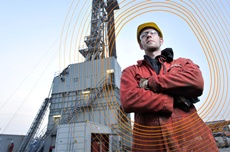Ireland’s San Leon to produce Europe's first shale gas
24 Jan 2014
Shale gas, the energy source that has shaken up world energy markets could soon become a reality in Poland, Eastern Europe's biggest economy and home to the largest shale gas reserves in the region.
 European specialty oil and gas company San Leon Energy Plc has successfully tested production of shale gas from its fields in Poland, clearing a crucial milestone on the way to commencing commercial production of shale gas for the first time in Europe.
European specialty oil and gas company San Leon Energy Plc has successfully tested production of shale gas from its fields in Poland, clearing a crucial milestone on the way to commencing commercial production of shale gas for the first time in Europe.
The testing was done at San Leon's Lewino-1G2 shale gas well on the company's extensive 894-sq.km Gdansk West concession in Poland's northern Baltic Basin.
In a statement, San Leon said that the company has achieved all of its goals in the Lewino testing programme including extensive data gathering of crucial information required to understand the recipe for a successful hydraulic fracturing (frac) and commercial flow in the Ordovician shales.
Based on the test results, San Leon said further plans to start more productive horizontal well drilling and multi-stage frac at Lewino in the near future, subject to certain conditions.
Hydraulic fracturing also known as fracking or simply frac involves drilling and injecting high pressure water and chemical-laced sand into rock formations underground, particularly shale, and its subsequent fracturing to release oil and gas from tight deposits.
San Leon's executive chairman Oisin Fanning said, ''This is the most encouraging vertical shale well test in Poland to date. We have moved a long way towards ''cracking the code'' towards commercial production from our unconventional plays.''
San Leon said that a sustained gas production rate of 45,000 to 60,000 standard cubic feet per day (scf/d) was achieved from Lewino-1G2 well after 6 weeks of clean-up.
The company's engineers estimate a potential production rate of 200,000 to 400,000 scf/d, based upon full clean-up of frac fluid.
Dennis McKee, CEO of United Oilfield Services, the main equipment provider for the project commented, ''The recovery of gas so early in the flowback of frac fluid is highly unusual and very positive. It suggests to me that the formation really wants to flow gas.''
Dublin-based San Leon Energy is an oil and gas company engaged in exploration activities in Europe and North Africa. The company is backed by Hungarian-born American billionaire George Soros and global investment management firm BlackRock Inc.
The US success in shale gas in the last decade has led to its rapid development in Canada and also has opened up new possibilities in Europe, Asia and Australia, although fracking continues to remain a contentious issue worldwide.
In Europe, countries such as Poland, the UK, Ukraine and Romania are eager to develop shale gas assets as a way to reduce their dependence on imported gas.
Based on the US experience in fracking, horizontal wells typically yield 7-30 times the production rate and recovery of vertical wells in the same formation, according to the company.
''I look forward to the horizontal with great anticipation as it stands a strong chance of proving up this play,'' McKee further stated.
Global oil and gas majors such as ExxonMobil, Marathon Oil and Talisman Energy, those were attracted to Poland's large shale gas reserves pulled out later due to lack of clarity in the country's energy laws. Recently, Italy's Eni also has joined the group leaving Chevron as one of the few big companies hunting for shale gas in Poland apart from smaller player San Leon.
According to the US Energy Information Administration data, Poland has possible reserves of 5.3 trillion cubic meters, although recent government estimates have been very conservative. The country is dependent on Russia for two-thirds of its annual gas requirement of 16 billion cubic metres.
Two days ago, the European Commission has proposed new guidelines to fracking, leaving national governments to decide on the controversial practice and providing recommendations for maintaining environmental standards.
These include rules on minimum distances between fracking sites and residential areas, water management, capture and use of gases and gas flaring.
The commission will review the situation after 18 months and may take a decision on the binding rules at a later stage.













.jpg)






.jpg)









